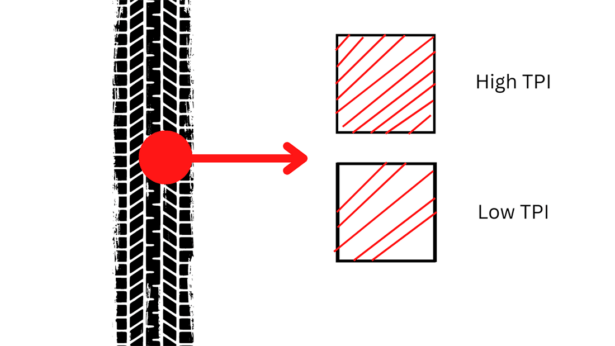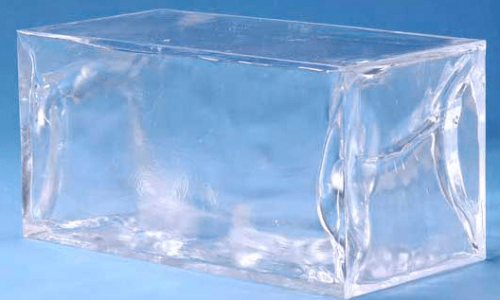When it comes to cycling, there’s a lot to learn, and riding the bike is definitely the easy part sometimes. Learning general maintenance, cycling etiquette, and what good coffee is vital to being the best cyclist you can be. Understanding your equipment will go a long way to helping you make the most out of your cycling.
A question at bike test reviews we are often asked is what does TPI mean, and how does it affect my cycling? In this article, we’re going to be discussing TPI. We’re going to tell you what it means and how you can use it.
 What is TPI?
What is TPI?
TPI stands for Threads Per Inch. This relates to your bike’s tires.
The TPI Is the number of threads in the rubber of the tire that cross through one square inch of single ply. The best way to understand this is to start by telling you a little bit about what makes a tire.
What is a tire made of?
Bike tires are made of much more than you might think, and you would be surprised at what goes into the process for well performing tires. Firstly we have the tread. This is what sits on the outside of the tire and is what connects to the ground to give you grip.
Then most tires will have an anti-puncture layer to help protect itself from thorns and flint. This is also known as a sub-casing. After this, we have the main casing, this is where the threads are housed, and the tires have the most flexibility. Threads are generally made of nylon and are crossed for extra strength.
Then right on the inside, we have the bead where it sits on the rim itself. This part is heavily thickened and, on some tires, called tubeless, made to be near on air tight to hold sealant in.
Is a higher or lower TPI better?
This is where it gets interesting. Many cyclists think that a high TPI is better than a lower TPI, but this isn’t always the case. In fact, it can mean the total opposite, depending on the type of riding you’re planning to do. Let’s explain;
High TPI
A tire with a higher TPI is generally classed as a performance tire. The more threads mean the thinner they will be, and this gives the tire better flexibility. It means more of the tire can contact with the ground while still keeping the rolling resistance fairly low and the tire fairly light. Performance tires can go as high as 350 TPI.
This does come with some drawbacks which might make you consider your tire choices. Firstly the high TPI tires generally come with very little puncture protection as they use less rubber. Secondly, high TPI tires tend not to last as long as you find yourself changing them more regularly.
Low TPI
A lower TPI tire is generally classed as more of a puncture protection tire. With fewer threads, they are generally stiffer, which makes the tire much less flexible, and with having a larger amount of rubber thorns and flint massively struggles to get in.
You will also find that lower TPI tires they are extremely durable and last a long amount of time. Low TPI tires can be as few as 26 threads per inch.
Lower TPI tires do come with disadvantages. They are much heavier and stiffer tires which means they will weigh your bike down. Not only that, but you will also find they won’t handle as well and can add a lot of lag to your riding.
Where can I find the TPI on a tire?
Finding the TPI on your tires can be quite challenging as not all tire manufacturers give you this information. The first step is to inspect the sidewall of the tire and see if you can find the TPI there. It will generally be displayed somewhere near the tire size or where it tells you how much PSI you can put in.
Failing that, you might want to get to the manufacturer’s website and see what information they have to offer. If you are using well known brands such as continental or Vittoria, they will have all the information on the site. Lesser known cheaper brands, you might struggle to find this information.
 What is the right TPI for you?
What is the right TPI for you?
It all comes down to what kind of riding that you plan on doing. Suppose you want to go racing and have performance in mind. Then the higher the TPI, the better.
If you are planning on a slow round the world trip, then you will want a low TPI tire for all the hard miles. If you’re looking for something in between and want a mix of performance and durability, then you might consider a tire with a TPI between 60 and 120.
Conclusion
TPI stands for Threads Per Inch. The higher the TPI, the more performance you will typically get, but the lower puncture protection. The lower the TPI, the better puncture protection but less performance. We recommend keeping this in mind next time you’re shopping for some new rubber.

Robbie Ferri has spent years working in a bike shop, has worked with industry leading brands on product creation, has been a semi pro athlete, and is a fully qualified strength and conditioning coach. He has broken World Records, bikepacked all over the World and raced ultra distance at a top-level.






